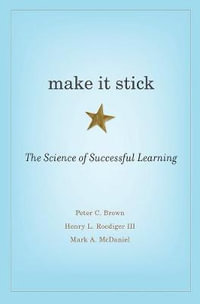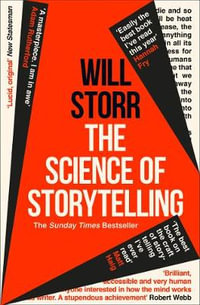
At a Glance
Paperback
RRP $135.00
$93.75
31%OFF
or
Aims to ship in 25 to 30 business days
When will this arrive by?
Enter delivery postcode to estimate
In this book, Leonard Talmy proposes that a single linguistic/cognitive system, targeting, underlies two domains of linguistic reference, those termed anaphora (for a referent that is an element of the current discourse) and deixis (for a referent outside the discourse and in the spatiotemporal surroundings). Talmy argues that language engages the same cognitive system to single out referents whether they are speech-internal or speech-external.
Talmy explains the targeting system in this way- as a speaker communicates with a hearer, her attention is on an object to which she wishes to refer; this is her target. To get the hearer's attention on it as well, she uses a trigger-a word such as this, that, here, there, or now. The trigger initiates a three-stage process in the hearer- he seeks cues of ten distinct categories; uses these cues to determine the target; and then maps the concept of the target gleaned from the cues back onto the trigger to integrate it into the speaker's sentence, achieving comprehension. The whole interaction, Talmy explains, rests on a coordination of the speaker's and hearer's cognitive processing. The process is the same whether the referent is anaphoric or deictic.
Talmy presents and analyzes the ten categories of cues, and examines sequences in targeting, including the steps by which interaction leads to joint attention. A glossary defines the new terms in the argument.
A proposal that a single linguistic/cognitive system, "targeting," underlies two domains of reference, anaphora (speech-internal) and deixis (speech-external).
In this book, Leonard Talmy proposes that a single linguistic/cognitive system, targeting, underlies two domains of linguistic reference, those termed anaphora (for a referent that is an element of the current discourse) and deixis (for a referent outside the discourse and in the spatiotemporal surroundings). Talmy argues that language engages the same cognitive system to single out referents whether they are speech-internal or speech-external.
Talmy explains the targeting system in this way- as a speaker communicates with a hearer, her attention is on an object to which she wishes to refer; this is her target. To get the hearer's attention on it as well, she uses a trigger-a word such as this, that, here, there, or now. The trigger initiates a three-stage process in the hearer- he seeks cues of ten distinct categories; uses these cues to determine the target; and then maps the concept of the target gleaned from the cues back onto the trigger to integrate it into the speaker's sentence, achieving comprehension. The whole interaction, Talmy explains, rests on a coordination of the speaker's and hearer's cognitive processing. The process is the same whether the referent is anaphoric or deictic.
Talmy presents and analyzes the ten categories of cues, and examines sequences in targeting, including the steps by which interaction leads to joint attention. A glossary defines the new terms in the argument.
Talmy explains the targeting system in this way- as a speaker communicates with a hearer, her attention is on an object to which she wishes to refer; this is her target. To get the hearer's attention on it as well, she uses a trigger-a word such as this, that, here, there, or now. The trigger initiates a three-stage process in the hearer- he seeks cues of ten distinct categories; uses these cues to determine the target; and then maps the concept of the target gleaned from the cues back onto the trigger to integrate it into the speaker's sentence, achieving comprehension. The whole interaction, Talmy explains, rests on a coordination of the speaker's and hearer's cognitive processing. The process is the same whether the referent is anaphoric or deictic.
Talmy presents and analyzes the ten categories of cues, and examines sequences in targeting, including the steps by which interaction leads to joint attention. A glossary defines the new terms in the argument.
A proposal that a single linguistic/cognitive system, "targeting," underlies two domains of reference, anaphora (speech-internal) and deixis (speech-external).
In this book, Leonard Talmy proposes that a single linguistic/cognitive system, targeting, underlies two domains of linguistic reference, those termed anaphora (for a referent that is an element of the current discourse) and deixis (for a referent outside the discourse and in the spatiotemporal surroundings). Talmy argues that language engages the same cognitive system to single out referents whether they are speech-internal or speech-external.
Talmy explains the targeting system in this way- as a speaker communicates with a hearer, her attention is on an object to which she wishes to refer; this is her target. To get the hearer's attention on it as well, she uses a trigger-a word such as this, that, here, there, or now. The trigger initiates a three-stage process in the hearer- he seeks cues of ten distinct categories; uses these cues to determine the target; and then maps the concept of the target gleaned from the cues back onto the trigger to integrate it into the speaker's sentence, achieving comprehension. The whole interaction, Talmy explains, rests on a coordination of the speaker's and hearer's cognitive processing. The process is the same whether the referent is anaphoric or deictic.
Talmy presents and analyzes the ten categories of cues, and examines sequences in targeting, including the steps by which interaction leads to joint attention. A glossary defines the new terms in the argument.
ISBN: 9780262551793
ISBN-10: 0262551799
Published: 9th April 2024
Format: Paperback
Language: English
Number of Pages: 672
Audience: General Adult
For Ages: 18+ years old
Publisher: RANDOM HOUSE US
Dimensions (cm): 0.1 x 0.1 x 0.1
Shipping
| Standard Shipping | Express Shipping | |
|---|---|---|
| Metro postcodes: | $9.99 | $14.95 |
| Regional postcodes: | $9.99 | $14.95 |
| Rural postcodes: | $9.99 | $14.95 |
How to return your order
At Booktopia, we offer hassle-free returns in accordance with our returns policy. If you wish to return an item, please get in touch with Booktopia Customer Care.
Additional postage charges may be applicable.
Defective items
If there is a problem with any of the items received for your order then the Booktopia Customer Care team is ready to assist you.
For more info please visit our Help Centre.
You Can Find This Book In
This product is categorised by
- Non-FictionLanguage & LinguisticsLinguistics
- Non-FictionPsychologyCognition & Cognitive Psychology
- Non-FictionLanguage & LinguisticsLanguage Learning & TeachingLanguage Teaching & Learning Material & CourseworkGrammar, Vocabulary & Pronunciation
- Non-FictionPsychologyPsychological Theory, Systems, Schools of Thought & ViewpointsCognitivism, Cognitive Theory























